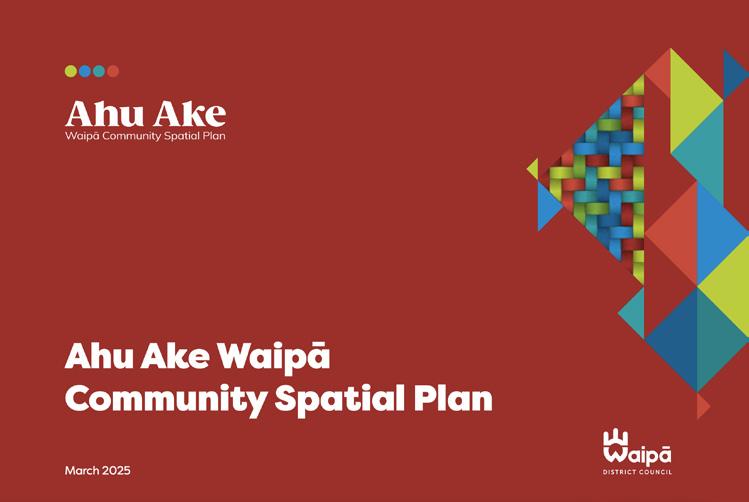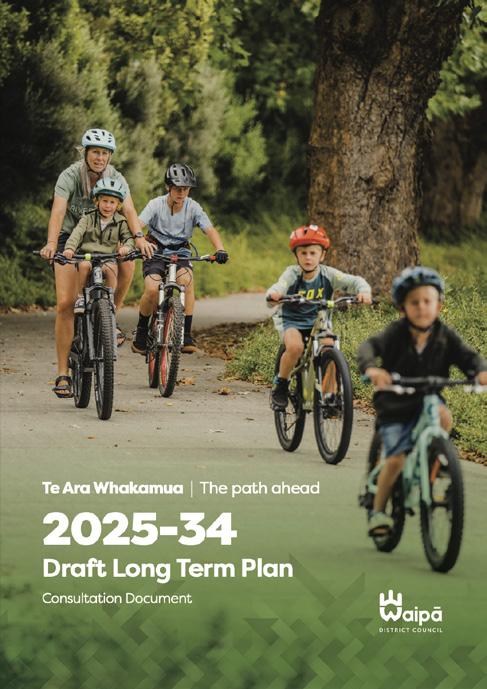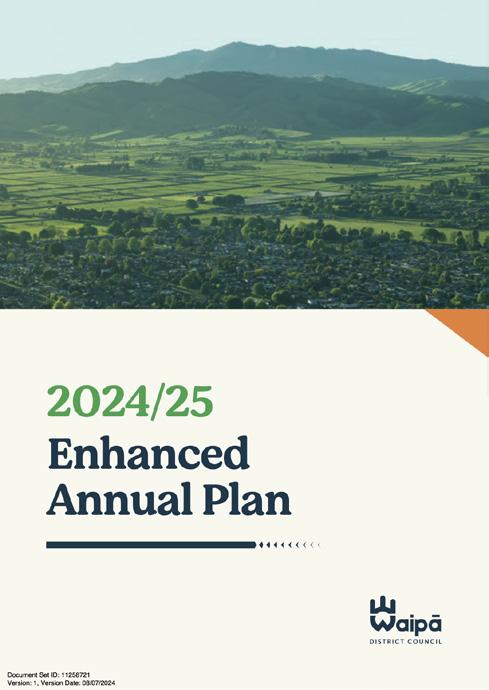












































































































































































































































































































































































































































































































This report has carried through the theme from Ahu Ake – Waipā Community Spatial Plan that is the blueprint for our district for the next 30 years.
That theme was inspired by Aotearoa’s harakeke (flax) plant –a native plant with a long history of being both beautiful and practical. Māori have long used the harakeke for a multitude of purposes, including kete (woven baskets). The kete is a design that while being useful also represents a creation of strength, beauty, tradition and future use. The act of weaving together the strong, often vibrant fibres that can be used by future generations, full of intricate detail, and able to be used in many ways. This is how we see Ahu Ake - Waipā Community Spatial Plan. It intricately weaves a future plan for the Waipā District, creating places and spaces where we are proud to work, live and play. The weave creates strength, bringing together the past, present and future. The colours represent the different pillars in our district – including our people, our land, our environment, our wellbeing, and our waterways.

























































































































































This Pre-election Report has been prepared in accordance with section 99A of the Local Government Act 2002. Its purpose is to promote informed public discussion in the lead up to the local government elections that are to be held from September 9 to October 11, 2025. It provides an overview of our district’s key issues, financial position, and the major projects planned over the coming years.
This report draws on previously published information from the Long Term Plan, Annual Plans, and Annual Reports. As required by legislation, it has been prepared by the Chief Executive independently of the Mayor and Councillors.
This report helps voters understand the challenges and opportunities facing our district and how as a Council we are planning for the future. It provides financial and nonfinancial information to support a better understanding of the decisions being made, the services Council delivers, and the direction we are heading in. Local democracy is strongest when everyone participates - your vote helps shape the future of our community.
If you are considering standing for election, this report offers a snapshot of major challenges, priorities, and projects that will need leadership and decision-making in the coming term. It outlines the current financial position and some of the key pressures and opportunities that will be inherited by the incoming Council. It is intended to support informed candidacy and to highlight the complexity and responsibility of governing at the local level.

Tēnā koutou katoa. Ki te kotahi te kākaho ka whati, ki te kāpuia, e kore e whati. Kei ngā tāngata of Waipā, tēnā, kāpuia mai.
Greetings to you all. When we stand alone we are vulnerable but together we are unbreakable. People of Waipā, let’s move together.
As Chief Executive of Waipā District Council, I am honoured to lead our place-based public service teams. Our people don’t just deliver to Waipā – Home of Champions, they are also in our communities as sports coaches, firefighters, school board members, volunteers and proud residents and ratepayers. For all these reasons, our teams are deeply connected to and committed to our vision of Waipā - Home of Champions: Building Connnected Communities.
We have an unwavering commitment to adding value in meeting needs across our district.
Every day we deliver the services, facilities and support that help keep Waipā moving and thriving – including providing clean drinking water, ensuring high quality wastewater, enabling housing solutions for a growing community, maintaining roads and parks, supporting economic development, providing leadership in emergency management, looking out for our favourite furry friends and pets, and protecting our natural environment.
We are also privileged to partner with iwi, hapū and mana whenua in supporting their respective vision and strategies for wellbeing. Additionally, we partner with a wide range of community leaders including developers, rural leaders, health, education and social sector leaders, nongovernment organisations and trusts, Central Government partners, other councils in the Mighty Waikato, and many more.
Like many fast-growing districts, Waipā faces some real challenges in our business context. We are a large organisation with a significant balance sheet, including the responsibility of operating and maintaining $2.5 billion of assets. Our operating budget in the coming year is $159 million.
The rapid pace of change in the local government sector, global impacts, a volatile national economy and increasing community expectation, means our operating environment is highly complex and
ever evolving. Two days are never the same, and Council’s Executive Leadership Team and the Elected Members work strongly together to meet these challenges.
I have been given a strong mandate from the current Council to ensure the organisation is fit for the future. That means making sure we provide effective value for money, are acutely focused on delivery, and have the right capability, capacity, culture and operating systems to nurture the 30year vision for our district and communities.
Adding value in this way can be challenging but is also exciting!
We are also a tier one growth council, a status that brings with it expectations. In this regard, we work closely alongside our Future Proof sub-regional growth councils (Hamilton City Council, Waikato District Council and Matamata-Piako District Council). We are all required by the Government to plan for growth, and we need to provide the infrastructure to support that. None of that is optional – it must be delivered and done well.
The funding and financing model of local government is no longer fit for purpose. This is a nationally recognised issue and not just one that affects Waipā. The funding and finance mechanisms for councils are largely governed by Central Government and haven’t fundamentally changed in a long time. Being a tier one council for example, is reflective of our growth pressures but it also allows us to access finance we wouldn’t otherwise be able to.
At the same time, we face rising costs to build and maintain infrastructure, along with increasing expectations to provide better and more resilient services. Maintenance and renewal of our current assets is critical. In parallel, we need to keep building and improving infrastructure in response to a growing and ageing population, ongoing economic growth, and technology changes.
Costs are rising faster than consumer inflation and growth is placing pressure on Council’s balance sheet. This affects affordability for residents and opportunities for economic development and good resource management outcomes.
There are also increasing pressures from ongoing Central Government reform. The transition to Local Water Done Well will have a dramatic impact on our Council as a business – the biggest impact since the 1989 Local Government Reforms – and we

are preparing for significant changes in resource management too. Much of this is change is long overdue and will also drive efficiencies, cost savings, and provide for sustainable workforce solutions.
We are committed to pursuing the examination of sensible options for revenue, operating and delivery of our business. The waters reform is the first and most significant cab off the rank.
Change is not something the local government sector – or we as people by and large – are comfortable with. However, it is critical we manage the transition well. Making sure our water services are run well is important for everyone in our community, both now and inter-generationally.
Clean drinking water, safe wastewater systems, and looking after our stormwater help keep our people healthy and our environment clean. A successful transition within the Local Water Done Well framework is intended to keep these services strong, affordable, and delivered in place to the best of our capability.
We also operate in an incredibly dynamic tech environment where there is increasing scrutiny and responsiveness, but also unchecked information distribution. In this environment, misinformation and disinformation can spread quickly. In response to that, we are applying resources to ensure our community receives accurate, timely information across multiple channels and remains well informed.
Our blueprint for the next 30+ years - Ahu AkeWaipā Community Spatial Plan – led in partnership with mana whenua and iwi, but developed with the whole community, is something we are very proud of. This plan will also help guide us in shaping the future of our places and communities, planning and attracting investment, and ensure informed decision making. This year, we are honoured to be a finalist in the Local Government NZ Awards for this spatial plan and the engagement approach taken to develop it.
Ahu Ake will influence and guide us as we strive to achieve our four community outcome aspirations of: Social Wellbeing, Environmental Champions, Cultural Champions and Economically Progressive. It is intended to inspire us to think long term, beyond short term political cycles, and leave legacies across our district as our forebears (tūpuna) have done for us.

Times of change test us but they also define us. Despite uncertainty, we remain focused on serving our communities and planning for a bright future. With clear vision - and steady leadership - Waipā is navigating change with confidence and care.
Local government is the place where decisions have direct and daily impact and influence. Elected members are more than decision-makers – they are kaitiaki (guardians), advocates, listeners, community connectors and long-term thinkers. They govern by setting the direction, developing strategy, ensuring the organisation is fit-forpurpose, monitoring closely the finances and delivery, and representing the voices of the whole district. It is a vitally important leadership role.
If you’re ready to help lead Waipā through challenge and change, now is your time. If you want to serve your community, now is your moment. If you believe in making good decisions for future generations – we need you.
This is your invitation. Enrol. Vote. Consider standing. Help us build a future Waipā that we are all proud to call home.
Mā tini mā mano ka rapa te whai. Ki te hoe!
Through shared commitment and collaboration, with our combined efforts, we will succeed.
Ngā mihi, nā, Steph O’Sullivan
Chief Executive Waipā District Council
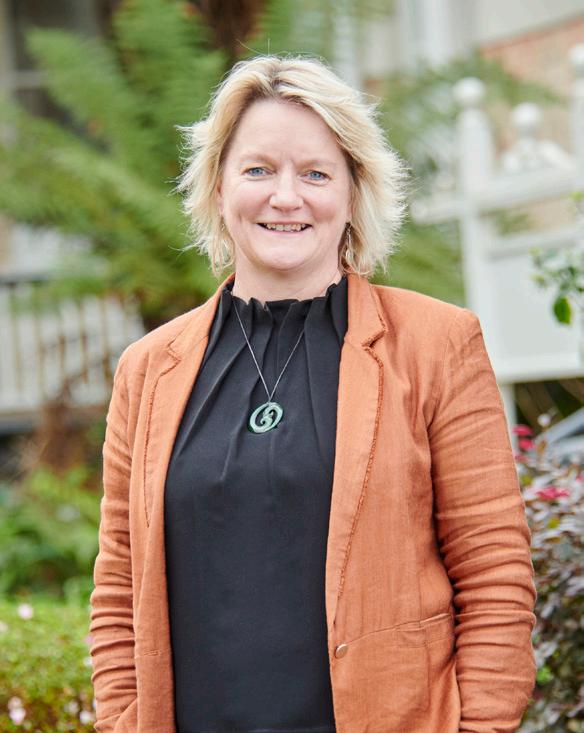
61,4001
total estimated population (2024)
22,100 in Cambridge
Made up of 14,400 in Te Awamutu
7066 in smaller villages including Karāpiro, Ngāhinapōuri, Te Miro, Ōhaupō, Rukuhia, Kihikihi, Pukeatua, Pirongia and Te Pahū
17,200 in rural areas
Total estimated population by 2034: 74,1652
Waipā vs. New Zealand population growth per annum
Waipā population growth per annum (1.8%)
People in Waipā identify3 themselves as
Eastern/Latin American/African
New Zealand population growth per annum and Stats NZ median projection for Waipā (1.2%) We have Joint Management Agreements with Waikato-Tainui, Raukawa, Maniapoto and Te Nehenehenui
Our district has
483 Dairy farms
381 Beef farms 66 Horse studs 24 farms growing kiwifruit4
1 Infometrics – population growth
2 Interim revised high growth projections, Prof. Michael Cameron from Te Ngira (University of Waikato)
3 As some people identify as more than one ethnic group, the total is more than 100 percent.
4 Stats NZ – Agricultural production statistics: Year to June 2022 (final) – farm counts by farm size, region, territorial authority, and farm type
5 Figure NZ – Horses (include racehorses) in New Zealand farms
Home ownership
74%
Waipā 66% New Zealand
District area
147,300 ha
Awa - Waikato, Waipā, Pūniu, Mangapiko and Mangaohoiover 300km of rivers and streams holding significant ecological and cultural value
Maunga - The mountains of Pirongia, Maungatautari and Kakepuku watch over the district
Roto - Two major hydro lakes (Karāpiro and Arapuni)
16 peat lakes - these have ecological, cultural, spiritual and historical significance
Waipā athletes won 12 of NZ’s 20 medals at the 2024 Paris Olympics That’s about 1.9 medals per 10,000 residents
(2014-2024)
(2014 - 2024)
Our tourism sector contributed $102 million to local GDP in 2024 an increase of 13.4% over 2023 – greater than the national average of 10.2%
Known as the ‘equine capital of New Zealand.’ As of June 2022, Waipā is home to approximately 3230 horses, making it the top district in NZ for horse numbers.5
Five year GDP growth (2015 -2020)
GDP
$3903 million (2024, Infometrics)
8799 Businesses
Agriculture, forestry and fishing (mainly dairy, beef, sheep and grain farming) manufacturing (mainly machinery/equipment) construction
Sanctuary Mountain Maungatautari is home to some of New Zealand’s most endangered birds –including three kākāpō!
Climate change means we can expect to see more
• Extreme weather
• Rainfall and flooding
• Higher temperatures
• Drought
• Land instability

Our mahi
We work alongside our community to enhance the wellbeing of the Waipā District and everyone who lives here. We do that by delivering the essential services and infrastructure that connect people, shape our places, and support daily life. Here’s just some of what we provide:
Animal control
Local roads you drive on
Libraries and museum
Kerbside recycling collection
Water that comes out of your taps
Playgrounds and skateparks where tamariki have fun
The safe disposal of wastewater
Pools where your whānau learn to swim
Civil Defence services Cemeteries
Footpaths and cycleways you use to get around your neighbourhood
Economic development
Parks and reserves
Strategies, policies, bylaws and future planning for our district
While Central Government makes decisions for Aotearoa New Zealand as a whole, we focus on what matters for day-to-day life in your town, street, and home. That’s why your voice matters, and why standing and voting in local elections is key to helping shape the future of your community.


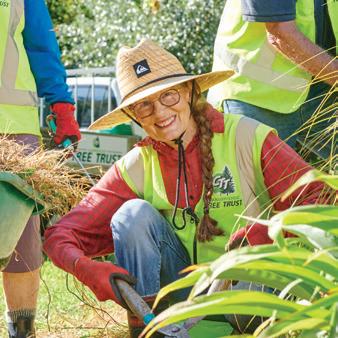
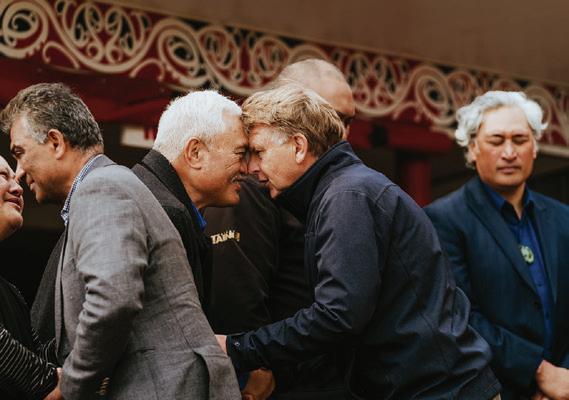
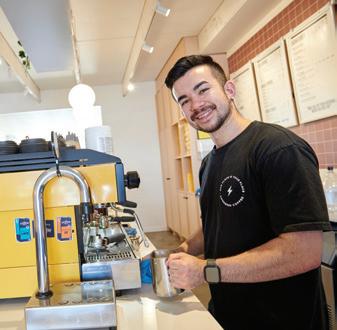
Effectively
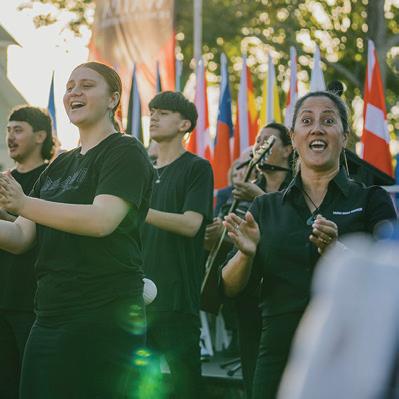
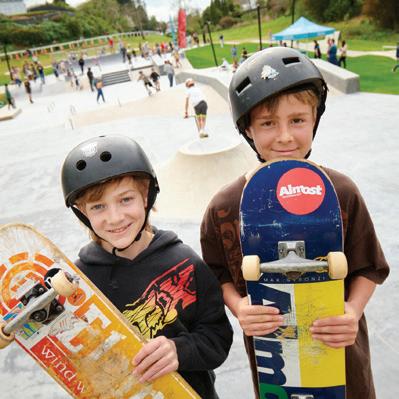
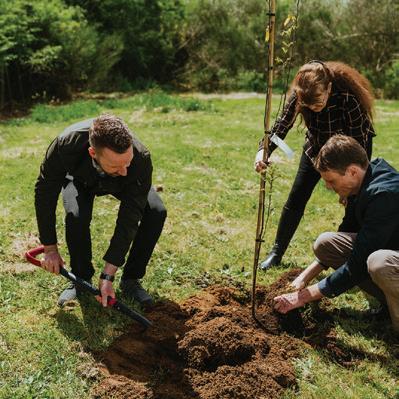

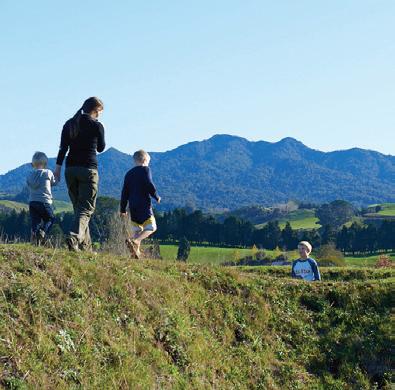
Nurturing
The outcomes we are working towards in Waipā are all about bringing our vision to life: building
To help guide us, we’ve worked with our communities to create Ahu Ake - Waipā Community Spatial Plan. This is our big picture plan for the next 30+ years – our blueprint for shaping the future of our district. It lays the groundwork for how we plan, prioritise, invest and deliver services and projects across the whole of our organisation.
To make Ahu Ake a reality, we will need to do things a little differently – working more closely with others, supporting and collaborating with our partners, agencies and community groups to deliver the bold changes this plan calls for.
As part of this, we have also developed an Anchor Institution Framework and Implementation Plan.
This is a smart and proven approach that has been used successfully overseas, particularly in the United Kingdom and United States.
The idea is simple: some organisations are deeply rooted in their communities and have a big influence on local wellbeing. These ‘anchor institutions’ – like councils, schools, hospitals, and universities – are major employers, buyers, and landowners. They’re here for the long haul and play a huge role in shaping the success of a place.
It’s about working smarter together – making the most of what we already have, tackling local challenges, and creating a district that’s resilient, thriving and full of opportunity for everyone.
COMMUNITY ASSETS AND INFRASTRUCTURE
Providing resources (land, buildings, community facilities) and expertise to build community capacity.
COMMUNITY COLLABORATION
Provision of enhanced community participatory processes, community wellbeing programmes, and civic learning programmes.
CLUSTER ANCHOR
PROCUREMENT
Directing organisational purchasing of goods and services towards local businesses.
COMMUNITY WELLBEING Social, cultural, economic & environmental
Council-led initiatives to stimulate the growth of related businesses and institutions within our communities.
EMPLOYMENT
Creating employment opportunities for local residents.
WORKFORCE DEVELOPMENT
Taking action to meet the workforce needs of our communities.
12

In August 2024, Waipā District Council reaffirmed its commitment to Māori representation by voting to retain its Māori Ward, which was introduced in 2022. This decision was strongly supported by local iwi and community feedback and reflected the Council’s commitment to ensure Māori have a guaranteed voice at the decision-making table.
Due to recent legislation changes from Central Government, Waipā voters will be asked to vote in a poll in the 2025 local elections on whether to keep or remove the Māori Ward. The poll is binding, meaning the outcome will decide the future of Māori Wards for our district for the following two elections.
o If the poll result is to keep Māori Wards, there will be Māori Ward elections in 2028 and 2031.
o If the poll result is to remove Māori Wards, there won’t be Māori Ward elections in 2028 or 2031.
Regardless of the result, the Māori Ward will remain in place for the 2025-28 term. If you are registered on either the Māori or General electoral roll, you will be eligible to vote on the poll.
This is a big decision about the future of local representation in Waipā – so make sure your voice is heard.
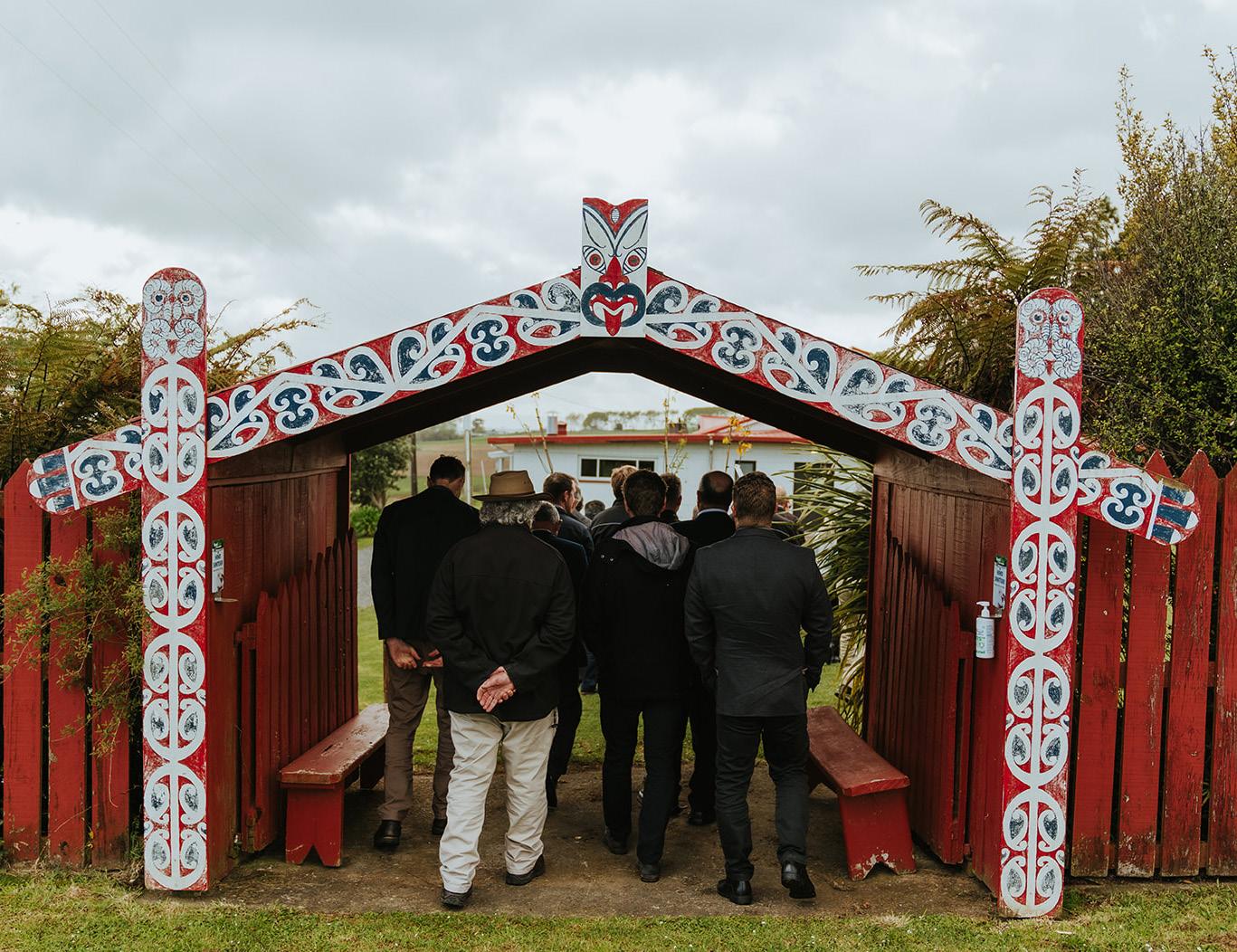
The Mayor and Councillors are elected by the community, and appoint the Chief Executive
Chief Executive
Employs and leads staff
Council staff
Chief Executive and staff carry out council decisions and day-to-day operations
Community at the heart of everything we do
• Cambridge Community Board
• Te Awamutu and Kihikihi Community Board
Councillors provide governance
Key functions are strategic direction, policy making and community representation.
• Waipā Māori Ward
• Cambridge General Ward
• Te Awamutu and Kihikhi
General Ward
• Pirongia and Kakepuku
General Ward
• Maungatautari General Ward
• Strategic Planning and Policy Committee
• Finance and Corporate Committee
• Service Delivery Committee
• Regulatory Committee
• Audit and Risk Committee
Waipā District Council is made up of two key parts — Governance and Management.
Here’s how it all fits together:
Every three years, the Waipā community elects a Mayor and Councillors. Their job is to set the district’s strategic direction and make decisions on behalf of our communities. This includes adopting strategies and plans such as the Long Term Plan, setting rates, and determining local policies and bylaws. Formal decisions are made at full Council meetings or through committees. Waipā District Council also has Te Kanohi - mana whenua representatives appointed to core committees to bring a Māori worldview and be a voice for mana whenua interests across the district. While Council staff provide expert advice and recommendations, Elected Members and Te Kanohi get to vote on these decisions.
The Chief Executive (CE) is appointed by the Mayor and Councillors and is in charge of leading the organisation. This includes putting Council’s decisions into action, delivering day-to-day services, and leading all Council staff. Waipā District Council has 364 staff (or 342.5 full-time equivalent roles), working across a wide range of services, from looking after roads and parks to planning for future growth. Our staff work across six main areas:
o Business Support
o District Growth & Regulatory Services
o Service Delivery
o Strategy
o Customer & Community Services
o Human Resources
Together, governance and management make sure Waipā District Council runs smoothly now, and is well set up for the future.

The Mayor is elected by the whole district to lead Waipā for a three-year term. As set out in the Local Government Act 2002, the Mayor’s role is to provide leadership to fellow Elected Members, represent the district, and carry out civic duties. The Mayor leads the development of important Council plans, like the Annual Plan and Long Term Plan, and helps shape the strategic direction of the district.
The Mayor has some specific powers, including:
o Appointing the deputy mayor
o Setting up Council committees
o Appointing committee chairs
o Serving as a member of all Council committees
Councillors are elected to represent their communities for a three-year term. While there is no formal job description, their role is to bring local voices to the table, make decisions on behalf of the whole district, and help shape the future of Waipā. Their job involves high-level strategic thinking, setting policies, making regulatory decisions, and reviewing council performance. While each Councillor is elected from a specific ward, when they sit around the Council table, their first responsibility is to the whole of the Waipā District, not just the area they represent.
Community Board members are elected to look after local interests and help connect communities and the Council. Community boards give people a stronger voice in decisions affecting their area, and ensure local views are heard on key issues.
If you are thinking about standing in the local elections, but are not quite ready to commit to the role of Councillor, then putting your name forward for your local community board is a great way to get involved.
At the start of every new Council term (sometimes referred to as a triennium) the Mayor and Councillors review and set up the structure of the Council committees. These committees consist of the Mayor, Councillors, and a mana whenua representative (Te Kanohi). The committees help manage different areas of Council decision making.
Every three years, Council puts together a Long Term Plan (LTP) that sets out our priorities, budget and levels of service for the next 10 years. It’s basically our roadmap for the decade ahead. If you are thinking about standing for Waipā District Council, it’s really important to be familiar with our Long Term Plan, as it guides a lot of the decisions you will be part of. In the years between, any shortterm updates to the Long Term Plan and budget are set out in our Annual Plans.
What we are planning to do, why we are doing it, and how much it costs
What we delivered over the past year, and how we performed
What we will do next year, how much it costs, and any variation from the LTP
Local government is about more than roads and recycling – it’s about building strong, inclusive communities and making smart, long-term decisions that set us up for the future. That means looking beyond today’s headlines and focusing what’s best for everyone who calls Waipā home, now and for generations to come. We don’t do this alone. We work alongside partners, especially mana whenua and iwi, who have deep roots, knowledge and history in our district.
Mana whenua and iwi
Mana whenua and iwi hold a wealth of knowledge about the cultural, natural, physical, and social environment of Waipā. Their connection goes back many generations, and their role in shaping our future is vital.
Waipā District Council has Joint Management Agreements with three iwi in Waipā, all of whom affiliate to the Tainui waka:
o Maniapoto
o Raukawa
o Waikato-Tainui
We also have a Joint Management Agreement with Te Nehenehenui, a post-settlement governance entity, representing the interests of Maniapoto iwi.
In addition, mana whenua of the Waipā District include:
o Ngāti Apakura
o Ngāti Hauā
o Ngāti Hikairo
o Ngāti Koroki Kahukura
o Ngāti Māhanga
o Ngāti Paretekawa
o Ngāti Unu and Ngāti Kahu
Note: There are other mana whenua groups connected to the Waipā District as well.
Over time, iwi, mana whenua and the Crown have worked through the settlement of claims against the Crown’s breaches of Te Tiriti o Waitangi (The Treaty of Waitangi).
The negotiated settlements can never fully compensate mana whenua and iwi for what was lost, but mark an important shift in relationships,

recognising the Crown’s responsibilities under Te Tiriti o Waitangi, and supporting a new era of partnership.
As part of these changes, Waipā District Council has Joint Management Agreements with River Iwi (Maniapoto, Raukawa and Waikato-Tainui), which is how we work together to manage important natural and physical resources, especially those connected to the Waikato and Waipā awa (rivers). Council is committed to nurturing and developing these partnerships, recognising the importance of walking alongside mana whenua and iwi as we shape the future of our district together.
Our Council’s Vision and Community Outcomes, alongside mana whenua and iwi aspirations, offer different perspectives on shared goals - helping us build a better Waipā for everyone.
Waipā District Council works closely with various Central Government agencies to get better outcomes for our community. What does this look like in the real world? It’s about making sure we are on the same page – so national and local priorities line up. This means working together on things such as new roads and schools and public safety, and ensuring Central Government support is focused where our communities need it most.
Waipā is growing fast – and we are not alone. That’s why we have teamed up with our neighbouring councils, iwi and Central Government agencies through Future Proof. Together, we are planning for smart, well-managed growth across the Waikato sub-region. Future Proof has a number of strategies and plans that guide how our communities grow and develop over the next 30 years, helping us make good decisions now that will benefit future generations.
Waipā District Council is also part of Co-Lab, a council-controlled organisation (CCO) owned by councils across the Waikato and Bay of Plenty. The goal of Co-Lab is simple: when councils work together, communities benefit. Through Co-Lab, we share services, systems and data such as building consents and geospatial services. This means we can do more, do it better, and save time and money for our communities.

Looking ahead, Waipā District Council faces a number of big challenges and decisions.
Like all councils across Aotearoa, New Zealand, we are preparing for big changes in how drinking water services, wastewater and stormwater services are delivered. The Government has introduced its Local Water Done Well policy, replacing the previous Three Waters reforms.
Under the new policy framework, all councils must submit a Water Services Delivery Plan by September 3, 2025. These plans need to show:
o The current state of our water infrastructure
o What upgrades and investment is needed to meet the requirements of growth
o How we’ll fund and deliver water services into the future.
Over the past year, we’ve looked closely at what might work best for Waipā. After considering a range of options, the preferred approach is a shared, council-owned organisation working alongside other rural and provincial Waikato councils. This model is called Waikato Water Done Well.
It’s a proposed Council-Controlled Organisation (CCO) jointly owned by several district councils in the Waikato region. The councils involved have been working together to design a model that provides safe, reliable and affordable water services while keeping strong local input for our communities, now and into the future. Five other councils have signed a non-binding agreement to be on board from the start with the Waikato Waters Done Well option, including MatamataPiako, Hauraki, Ōtorohanga, Waitomo, South Waikato, while Taupō has opted for a slightly different starting position.
Right across the region, we’re facing common challenges: ageing pipes and infrastructure, population growth, rising costs, and new regulatory and environmental standards. The idea behind the shared Council-Controlled Organisation is simple - we can do more, and do it better, by pooling our resources and working together. The key benefits of the proposed model include:
Water charge increases are forecast to be around four percent a year (including inflation) over the first eight years. That’s lower than the other options we looked at, including sticking with the status quo.
The CCO would have more financial flexibility to fund the upgrades and new infrastructure that’s needed.
A larger organisation could reduce duplication and improve how services are delivered.
Attracting and retaining skilled staff is easier when you’re part of a bigger organisation with more opportunities.
A well-resourced organisation will be better able to invest in infrastructure that can handle more extreme weather and stricter environmental requirements.
What would it mean for Council and our community?
If we go ahead, the new organisation - Waikato Waters Ltd - would take over the day-to-day running of water and wastewater services. For residents, things won’t change overnight. You’d still contact Council if there is a water problem, and over time a dedicated customer service team will come online. One change to expect down the track is how you will pay for water – instead of water charges being part of your rates bill, you will receive a separate invoice for water services.
Council would no longer run the water and wastewater services itself but we would still have a say in how it all works. Partner councils would jointly agree a Statement of Expectations that sets out how the organisation should operate and what outcomes it needs to deliver. A professional board would manage day-to-day operations and investment decisions.
We would contract them to deliver stormwater services too.
This would be a significant shift in the shape of our Council. Right now, around a third of our capital spending goes into water infrastructure. Moving to a CCO would change our staffing needs, asset base, and how we plan and budget for the future.
There’s still a lot to figure out, including:
o What roles and expertise we’ll still need within Council
o How the rest of Council operates without water services, so we remain fit for purpose
o How we support staff and systems through the transition
o What new partnerships or ways of working might be needed
o How we stay closely connected to our community under the new setup.
And most importantly, we need to ensure our community understands what’s happening, why it matters, and how to stay informed.
A final decision on whether to proceed with Waikato Water Done Well is intended to be made by Friday, July 18. In the meantime, we’re continuing to work closely with partner councils to refine the model, and we’re developing our
Water Services Delivery Plan. There are still some unknowns, like how regulations will be applied, and whether there will be Central Government support for the transition. But one thing is clear: to keep water services safe, reliable and affordable, we need to do things differently.
This is one of the biggest changes facing local government and it’s a real opportunity to shape a system that works better for our communities, now and into the future.
We are fortunate to live in a district where people want to live, work, play and invest and that’s something we are proud of. By 2034, we are expecting 74,165 people to call Waipā home. But population growth also brings pressures. Our infrastructure must keep up with demand, and so must our ability to fund it.
As Waipā attracts new residents and businesses, we need to invest in the essentials to accommodate this growth. This means we need more homes, more roads, more water and wastewater networks, and high-quality facilities that our communities enjoy. At the same time, we face the ongoing challenge of doing more with less. Recently, we have experienced periods of high inflation, high interest rates, and tighter borrowing limits. These financial constraints have impacted what we can deliver now and in the future.
In our draft 2025–2034 Long Term Plan, we signalled that we simply can’t afford everything we want to deliver. Some tough decisions had to be made to ensure we stay within our financial means.
We’ve applied a clear set of prioritisation principles to guide our infrastructure investment decisions:
o First, we have made sure we can meet our legislative and compliance obligations.
o Second, we’ve focused on looking after what we already have by maintaining and renewing existing assets.
o Third, we’re planning carefully for future growth, ensuring we can meet the needs of a growing district.
o And importantly, we’re aligning all investment with Ahu Ake – Waipā Community Spatial Plan, which was shaped by our community and clearly outlines what the community wants for our district.
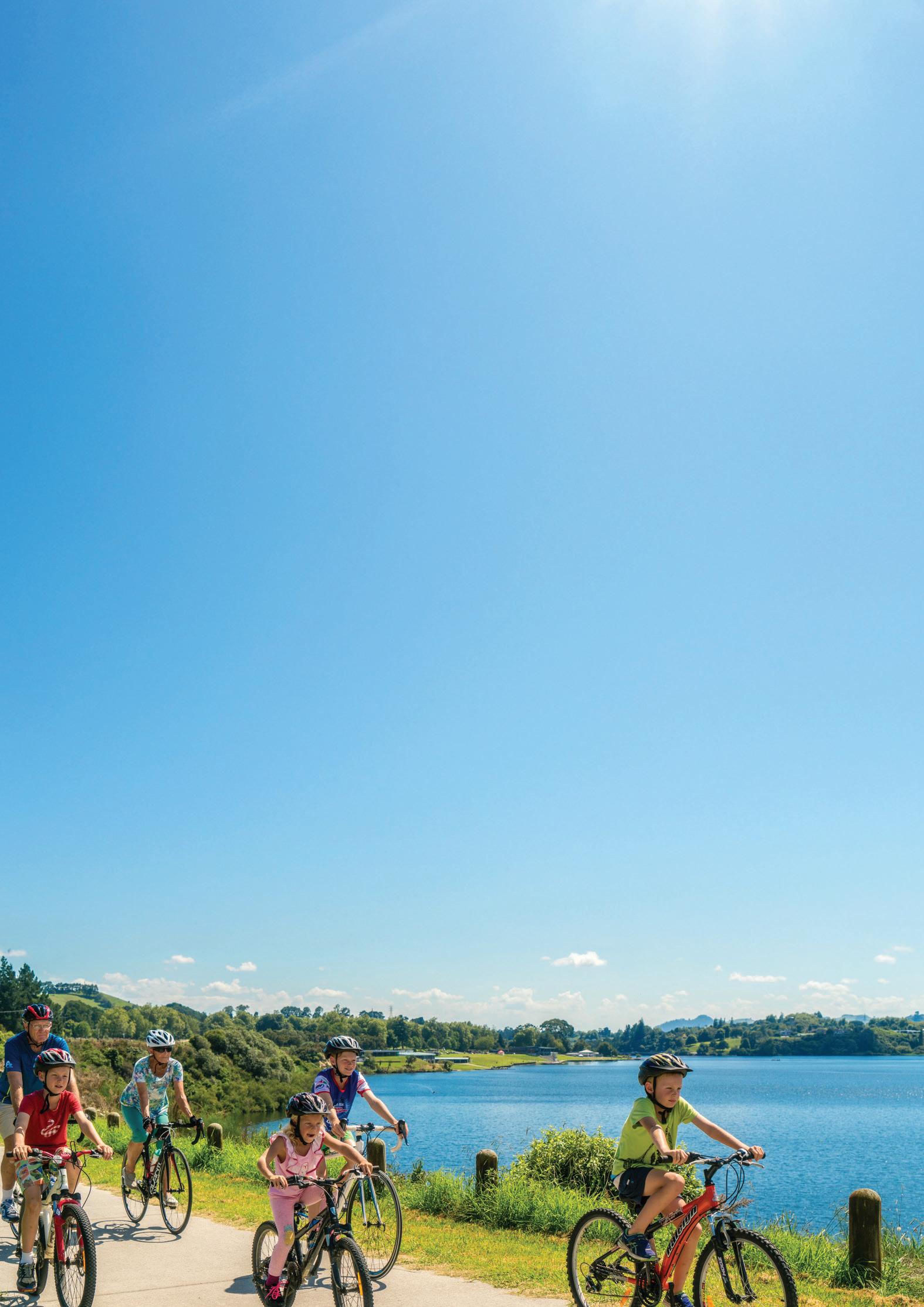
This has meant reducing or deferring some parts of our asset renewal programme in the shorter term. However, we’re planning to catch up by Year 9 of the draft 2025–2034 Long Term Plan (2033/34 year), when we expect to have completed deferred works and return to delivering renewals in line with our activity management plans. We’re not planning to reduce levels of service, but we are focusing hard on delivering them efficiently and sustainably.
We’ve made tough calls on cornerstone projects
The financial environment means we’ve had to make some difficult calls on cornerstone community projects. These are projects we know are important to our community, but we simply can’t fully fund them at this time.
Projects we’ve been unable to fully fund in the 2025–2034 Long Term Plan include:
o Te Ara Wai – a proposed cultural centre telling the stories of Waipā’s people, history, and land wars
o A new Cambridge Library to support a growing community and changing needs
o Further refurbishments to the Cambridge Town Hall, an iconic heritage building
o The Te Awamutu to Pirongia Cycleway, which would improve connectivity and recreational opportunities.
Where to from here:
We know our community has big hopes for the future, and we’re doing everything we can to play wisely and deliver in a way that’s affordable, sustainable and future-focused. Our prioritisation principles have helped guide us, making sure we are spending wisely while still working towards the long-term outcomes our community says matter most.
These priorities will be reconsidered through our future planning and budgeting processes including our next Long Term Plan and Annual Plan.
We’re also exploring new ways of working that help us get better results, especially when it comes to
tackling complex, shared challenges. One of these is through planning that looks beyond district lines and works across councils. Through the Future Proof partnership, we already work closely with our neighbour councils in Hamilton, Waikato, and Matamata-Piako. We’re now thinking about how this kind of collaboration could be applied to tackle other big issues, such as economic well-being, climate resilience and environmental sustainability.
For Councils, Central Government changes often mean taking on extra work and costs. In most cases, we don’t receive any extra funding to help cover these responsibilities. And because our planning and budgeting cycles are locked in by law, it’s not always easy to include this new, unexpected work on top of our business as usual. Implementing and funding Central Government reforms will continue to be a challenge in the years ahead.
Here are just a few of the major changes that Council needs to adapt to:
o Moving from the Three Waters reforms to the new Local Waters Done Well model
o Changes in transport direction and funding
o Changes to the Resource Management Act which will completely change how we manage land, water and development
o Proposed changes to the purpose of local government, which could require us to revisit our strategic foundations
o A shift in Central Government relationships with some of our key constitutional documents, which could impact how we work with our iwi partners and the wider community.
We’re keeping a close eye on all of these changes and doing our best to stay flexible and adaptable — while still delivering on what matters most to our people, today and into the future.
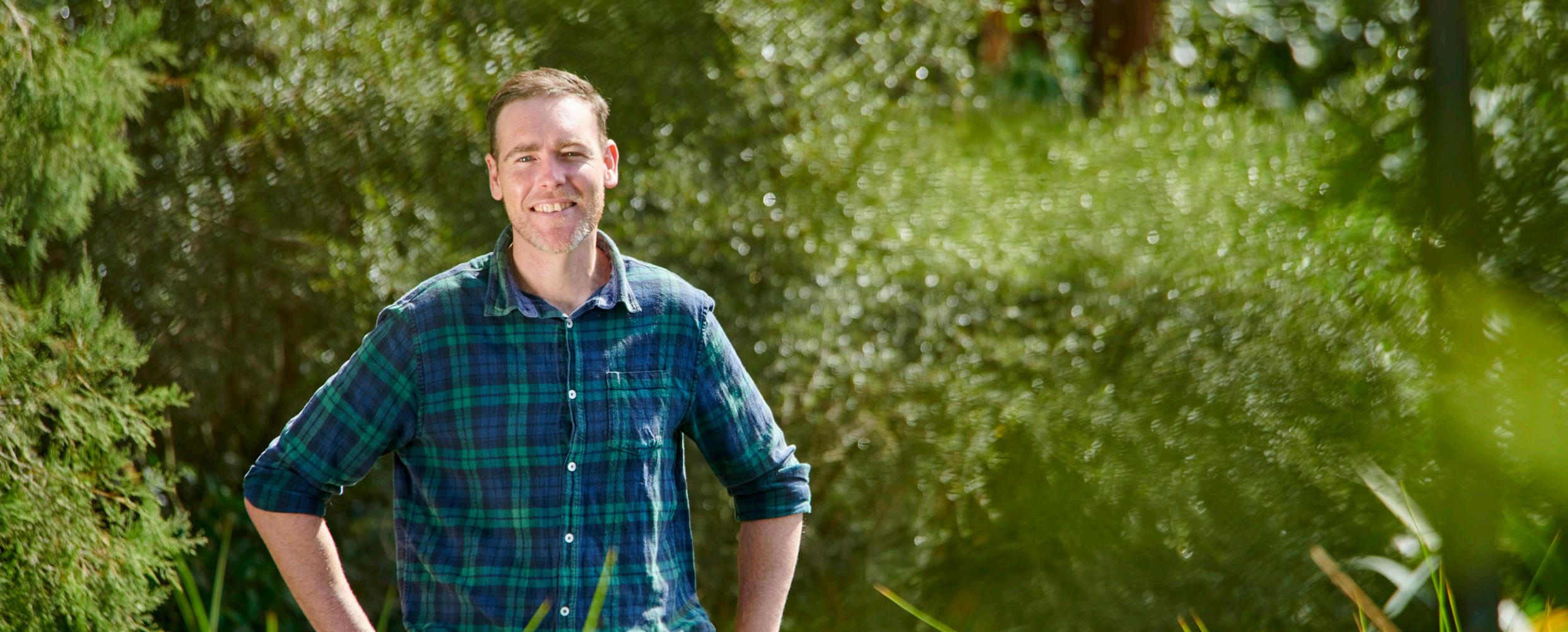
Waipā’s natural environment is central to our identity, lifestyle and economy. However, as our district continues to grow, so do the pressures on our environment. From managing stormwater and protecting biodiversity, to keeping our waterways healthy and soils productive, while ensuring responsible waste management, it’s vital we look after the things that sustain us.
At the same time, responding to climate change is an increasingly urgent and ongoing challenge. We are already seeing more frequent and intense weather events. These are having real impacts on our roads, our infrastructure, economy, environment, and ultimately, the wellbeing of our communities.
Over the last three years, we have been working hard to better understand the risks and take action. So far, we have:
o Completed a climate risk assessment for Council-owned assets
o Developed a draft Climate Change Strategy
o Started planning a community-focused climate change risk assessment to better understand local impacts
o Begun measuring and tracking our organisational emissions annually
o Identified ways to reduce our footprint over time.
This approach is aligned with the direction set by Ahu Ake – Waipā Community Spatial Plan, which puts a strong focus on caring for our environment, building climate resilience, and managing growth in a sustainable way.
Acting on climate change and supporting our environment isn’t only about one-off projects, it’s about changing the way we plan, build, and operate. This includes:
o Designing infrastructure that can better handle extreme weather
o Helping communities adapt and build local resilience
o Making smart land use and transport decisions that reduce emissions
o Protecting our natural environment and biodiversity for future generations
o Ensuring our planning reflects long-term environmental limits.
We know we can’t do this alone. Partnerships are key – with mana whenua and iwi, with other councils, community groups, businesses and Central Government. A healthy environment benefits us all.
In 2025 and 2026, we are aiming to finalise and roll out our Climate Change Strategy, progress the community climate change risk assessment, and keep working to reduce Council’s own emissions. We’ll also work with others across the region to explore shared approaches to climate adaptation.
Looking ahead, we will need to be flexible, collaborative and forward-thinking. Climate change is not a challenge that we can fix overnight – or face alone, but it’s one we must be prepared for. Through strong planning, good partnerships, and early action, we can protect our assets and play our part in protecting what makes Waipā special and build a district that is ready for the future.

The Waipā district is deeply shaped by our history –including the British invasion of the Waikato during the New Zealand Land Wars of 1863-64. That conflict led to the displacement of mana whenua from their ancestral lands and awa (rivers), causing long-term and devastating impacts on the social, cultural, economic and environmental wellbeing of iwi and hapū in the district.
Over time, Treaty settlement processes have enabled some mana whenua and iwi to seek redress for the Crown’s breaches of Te Tiriti o Waitangi (The Treaty of Waitangi). However, negotiations continue for those with outstanding claims and further, it is acknowledged that negotiated redress can never fully compensate mana whenua and iwi for the significant losses which resulted.
Waipā District Council has relationships with mana whenua stretching back decades. Today, we are focused on strengthening those connections and making sure Māori voices are actively included in decision making that shapes the future of our district.
Supporting Māori to be part of the decisionmaking process is an important priority for Waipā District Council. This reflects our commitment to Te Tiriti o Waitangi and our legal responsibilities under the Local Government Act 2002.
Te Tiriti o Waitangi is New Zealand’s founding document. It sets out the relationship between Māori and the Crown, where the Crown governs (kāwanatanga) while protecting Māori rights and independence (tino rangatiratanga) over their whenua, taonga, and culture.
Waipā District Council works with iwi and mana whenua in many different ways, including:
o Sharing information
o Consulting on important matters
o Engaging on decisions that impact Māori
o Working together through co-design and cogovernance.

Each relationship is unique, and part of our role is to understand, respect, and nurture those connections — so we can build a district that’s more inclusive, more equitable, and more deeply connected to its past and its people.
The next few years is all about maintenance, nothing too flashy, making sure we keep providing quality spaces for people to live, work, play and invest.
Cambridge connections: moving forward together
A 30-year transport plan, developed in conjunction with the community, that sets out what transport services and infrastructure will be needed for Cambridge over the short, medium and long-term.
Building Waipā’s economic wellbeing
We have set aside 130 hectares of land for industrial and commercial development in Cambridge and Te Awamutu, with more planned for a hub at Hautapu.
Maintaining roads, footpaths and bike lanes
We’ll be spending $89.2 million in capital costs on renewing our roads and nearly $17.2 million on maintaining footpaths and cycleways.
Maintaining council owned buildings
Around $7.6 million will be spent on maintaining our buildings.
Maintaining council owned playgrounds, parks and libraries
We are expecting to spend $2.1 million to maintain playgrounds across the district.
Community services and facilities
We are planning to spend $148.2 million in capital on community services and facilities in the next nine years.
So transport activities happen in a coordinated way to make sure that people and freight can move around easily, even as Cambridge and the rest of the district grows significantly.
Waipā is growing fast. We are planning ahead to meet the economic, social, cultural and environmental needs of the community.
To provide Waipā with multi-modes of transport and effective connections to the places you need to go.
We need to make sure that the buildings remain maintained and serviced in our portfolio of council, community, and commercial properties. This includes 102 pensioner housing units.
Making sure our tamariki (children) and mokopuna (grandchildren) and maybe even the pakeke (adults) have safe spaces to play and learn.
Providing open spaces and waterway restoration for the wellbeing of Waipā’s community and environment. The needs of our communities wellbeing after death is also being taken care of with new cemeteries and cemetery expansions. And don’t forget your furry friends – we have budgeted for a new dog pound in Cambridge to meet health and safety requirements, animal welfare standards, and the increasing numbers of animals being impounded.
All of the services and projects Council delivers, from roads and playgrounds to libraries and recycling collection, need to be paid for. We fund our work through a mixture of income sources, including rates, Government subsidies and grants, interest income, fees and charges, development contributions, financial reserves and loans. No single source covers it all — most projects are funded through a combination of these.
o General rate – this is based on capital value of a property and helps fund services that benefit the whole district.
o Uniform Annual General Charge (UAGC) - a fixed amount per Separately Used or Inhabited Part of a property (SUIP) to meet a portion of districtwide costs. UAGC is limited to 30 percent of rates.
o Targeted Area Rate – used for activities that benefit a specific local area.
o Other targeted rate – these fund specific services like water supply, wastewater and community halls and are charged only to those who use or benefit from them.
o Fees and charges - these are set each year so that people using a service pay directly to cover most of the costs of what they use – including dog registration, building consents and facility hire.
o Subsidies – received from Central Government to help with things like roading upgrades, for example, NZ Transport Agency Waka Kotahi helps fund local transport improvements.
Sometimes Council needs to spend a significant amount of money to build or maintain an important asset. These are long-life assets and they often include additional capacity to allow for future growth.
Today’s ratepayers do not have to pay the full cost of assets that will also benefit future generations. Funding the cost of depreciation and raising debt to fund projects is often the fairest way to ensure intergenerational equity, spreading the cost across multiple generations that will all benefit from that asset.

Council needs to allow for replacement of assets at the end of their useful lives. The replacement of assets is often funded through depreciation which is sourced from a mixture of targeted rates and in some cases fees and charge. Council assesses the value of its assets every year and due to inflation generally increases the associated depreciation charge as the asset costs more to replace in the future. The revaluation process provides an update on the remaining life of the asset to ensure costs are adequately spread across multiple generations. This also enables assets to be replaced at the appropriate time.
Sometimes instead of borrowing funds for its capital projects, Council is able to use its cash reserve at least for a short-term basis. This is called internal borrowing and it reduces the need for external borrowing from funding agencies such as banks which charge interest on loans. Any money borrowed internally is generally repaid over normal loan terms, 30 years.
External debt is debt owed to organisations external to Council such as banks and the Local Government Funding Agency Limited. At June 30 2025, Council is forecasting $470 million over the next year in external debt.
Council aims to be as open and transparent as possible. Council goes through a rigorous audit each year conducted by Audit New Zealand. The audit involves an assessment of the appropriateness of Council’s processes and confirms the information disclosed in the Annual Report is a fair reflection of Council’s activities and financial position for the period concerned.
At June 30 2025, Council’s assets are forecast to be valued at $2,794,702,000. This is made up of:
o Infrastructure assets (roads, bridges, pipeline networks and treatment plants) - $2,113,230,055
o Land and buildings - $564,581,662
o Plant, library books, furniture and equipment$73,143,283
o Intangible assets - $5,375,000
o Forestry - $2,276,000
o Investment property - $36,096,000.
The Council adopts its Financial Strategy as part of the Long Term Plan. The Financial Strategy includes limits on rates levels, rate increases and borrowing that aim to promote financial stability and affordability. This report provides information on how Council is tracking against the targets and thresholds set in the Financial Strategy and the Enhanced Annual Plan 2024/25. Further benchmarks can be found in Council’s 2021-31 Long Term Plan, the 2023/24 financial results and the Enhanced Annual Plan 2024/25.
Setting limits on rates and rate increases is a key part of ensuring financial sustainability. Council sets these limits at levels that provide a focus on maximising revenue from non-rate sources and ensuring affordability given our strategic goals and priorities.
Council will limit annual increases for existing ratepayers to no more than the forecast Local Government Cost Index for that year plus two percent.
The Local Government Cost Index is an inflation measure based on the cost structures of New Zealand’s local authorities. The Local Government Cost Index is different to the Consumer Price Index as it includes goods which consumers would not normally purchase such as core infrastructure materials. The Local Government Cost Index is sourced from Business Economic and Research Limited.
The following graph compares the Council’s actual rates increases with a quantified limit on rates increases included in the Financial Strategy in the Council’s Long Term Plan.
Quantified limit on rates increase Actual rates increase (at or within limit)
Council’s borrowing limits are based on its ability to service the cost of debt as set out in the Treasury Management Policy which states that gross interest expense will not exceed 15 percent of specific, defined revenue sources.
Council meets the debt affordability benchmark if its planned borrowing is within each quantified limit on borrowing.
The graph below compares Council’s planned debt against the quantified borrowing limit. This limit represents the maximum amount Council can borrow in any given year. For the years 2022–2025, the limit is set at 250 percent of total revenue.
The green bars in the graph indicate that our planned borrowing is below this limit (shown as black bars) for each year, except for the 2024/25
forecast year, where borrowing was expected to exceed the 250 percent internal limit set in the 2021-31 Long Term Plan.
However, it is important to note that for the 2025/26 year, the quantified limit has changed from the 250 percent internal limit set in the Long Term Plan 2021-31. It was updated and set at 350 percent of revenue*, as per the draft Financial Strategy in Council’s Long-Term Plan 2025-34 rather than the 250 percent shown in the graph.
*Revenue used in this calculation excludes development contributions, financial contributions, fair value adjustments and vested assets.
Essential services benchmark
The following graph displays the Council’s capital expenditure on network services as a proportion of depreciation on network services. The Council meets this benchmark if its capital expenditure on network services equals or is greater than depreciation on network services.

Waipā District Council is experiencing significant financial pressures. Inflationary increases, increases in the cost of compliance to meet regulatory standards and requirements, increased cost of debt and material increases in the cost of civil construction and land prices have forced Council to implement rates increases higher than what we had expected as part of our planning for the 202131 Long Term plan.
The economic downturn in New Zealand in recent years have also meant that we carry development debt on our balance sheet for longer, with our growing community we also had to invest heavily in our wastewater infrastructure with the build of Cambridge Wastewater Treatment Plant. This means that Council’s debt has increased over the last couple of years and we were close to our debt limit set by the Local Government Funding Agency as part of our loan arrangements with them. Monitoring our exposure to external debt against the level of revenue we can generate will be a key focus area for us over the medium term.
The financial statements contain information for the three years prior to the election (retrospective) and information for the year of the election and the three years after (prospective). Due to the timing of this report, the financial information for the 2024/25 financial year is based on forecasts made in February 2025. The actual results achieved for this year will be in the 2024/25 Annual Report and are likely to vary from the information presented. Those variances may be material depending upon the circumstances that arise during that period.
The funding impact statement for this and the next three years has been prepared in accordance with schedule 10 of the Local Government Act 2002, as well as sections 13 to 19 of the Local Government (Rating) Act 2002 and sets out:
o The revenue and financing mechanisms used
o An indicative level or amount of funding for each mechanism
o A summary of the total rates requirement
o The application of funding methods to Council activities.
Council Funding Impact Statement – Retrospective
Funding balance ((A - B) + (C - D))
((A - B) + (C - D))
Public service is at the heart of a functioning democracy. In local government the impact of decisions are immediate, close to home and very visible. Local leaders help shape the places we live, work, and play. That means the choices made around the Council table matter — not just for today, but for the generations to come.
Sometimes, that means making tough calls. The right decision isn’t always the most popular one. But we need leaders who are willing to make bold, thoughtful decisions — the kind our mokopuna (grandchildren) will thank us for.
Do you care deeply about your community? Have good ideas and a positive vision for the future? You might be just who we need. Our community thrives when people from all walks of life step up and stand for local government. Good representation means to act in the best interests of the whole district, acting with integrity, and making decisions that balance today’s needs with those of the future. You will need to build strong relationships with the community, with iwi, hapū and whānau, with community organisations and groups to make sure that all voices in our district are heard.
Being a local Elected Member is a big responsibility — and no two weeks are exactly the same. But here’s a taste of what you can expect:
o Listening and leading. You’ll need to balance a range of perspectives to make decisions that are good for the whole district — not just the people who voted for you. That means actively engaging with your community, mana whenua, and others to understand their needs and aspirations.
o Doing your homework. Council and committee meetings happen most weeks and come with reports to read. You will need to spend time preparing, talking to your community, and weighing up the options.
o Debating and deciding. You’ll be part of open discussions — sometimes in the Council Chambers, sometimes online. You’ll debate ideas and vote on everything from infrastructure to community events and future planning.
o In the public eye. Most meetings are public and media may attend. You might be asked tough questions or be contacted for an interview, especially on hot topics.
o Staying informed. Workshops, briefings and information sessions will keep you up to date on what the Council is working on and what is happening in our district.
o Representing Council. You might be asked to attend or speak at community events, school visits, commemorations or meetings with our partnership organisations, Central Government, and other forums, formal or informal.
o Being available. People will get in touch, by phone, email or social media, with questions, concerns and ideas. You will need to be responsible and ready to deal with all kinds of subjects, from footpaths and funding to future planning.
It’s a varied, challenging and rewarding role. If you’re passionate about people, community and the future of Waipā — this could be your next step.
Having a holistic view is essential. Sometimes, what’s possible is shaped by national legislation, so the role involves more than just local opinion — it’s about balancing community views, personal beliefs, and legal responsibilities to make the best longterm decisions for Waipā.
If you feel like you are up for the challenge, then here is what you will need to stand for Council:
Your nomination must include:
o Two people to nominate you - they must be over 18 and enrolled to vote in the area you are standing in
o A nomination deposit of $200 for each position you are standing for.
We must receive your nomination by 12 noon, on Friday, August 1, 2025 – don’t leave it until the last minute!
You can stand for:
o Mayor
o Councillor in a General Ward or Māori Ward seat (but not both)
o Community Board member.
If you are elected to more than one position, the highest ranked position takes priority. You can only stand as a Councillor in one ward, or subdivision for a community board. You can not stand for Mayor and/or Councillor and also seek nomination for Waikato Regional Council.
4 July 2025
Candidate nomination open and roll opens for public inspection
1 August 2025 (at 12 noon)
Candidate nominations close and roll closes
by 6 August 2025
Public notice of candidates’ names
9 September 2025
Voting opens
9 – 22 September 2025
Voting documents delivered
7 October 2025
Last day for posting vote by mail. After this date votes must be returned to Council’s secure ballot boxes.
10 October 2025
Last day to enrol to vote
11 October 2025 (at 12 noon)
Election Day - voting closes
Progress results announced
12 October 2025 (from 12 noon)
Preliminary results announced
16 October 2025
Final results announced
October – November 2025
Elected Members’ swearing in ceremonies.
Are you enrolled to vote? Check you’re enrolled or update your details today It only takes two minutes!
To be eligible to enrol, you:
o Must be 18+
o Must be a New Zealand citizen or permanent resident
o Must have lived in New Zealand for at least one year.
Visit https://vote.nz
Everyone on the electoral roll was be sent an enrolment update pack in the mail in the first two weeks of April 2025.
If you enrol or update your address after Friday August 1, 2025, you won’t get your voting papers sent to you in the mail. You’ll need to contact your council’s electoral officer and make a special vote. You can either phone and request a special voting pack to be posted out to you, or call into either of the Council offices during our normal office hours.
o Te Awamutu head office: 101 Bank Street, Te Awamutu
o Cambridge service centre: 23 Wilson Street, Cambridge
o 0800 WAIPADC (0800 924 723)
The last day to enrol to vote in the local elections is Friday October 10, 2025.
1. All elections have random order of candidate names on the voting paper.
2. Waipā votes using First Past the Post. It’s simple, whoever gets the most votes wins! So, make sure you get out there and be counted.
3. You can vote by placing your sealed and filled in voting paper in either a mailbox (on or before Tuesday, October 7) or in one of the orange voting boxes around Waipā.
Special voting is available for anyone who spoils, loses, or does not receive their voting paper or enrols after Friday, August 1. This is available at both council offices, or can be posted out if requested by Friday, October 3.

Ahu Ake
Ahu Ake – Waipā Community Spatial Plan is the blueprint for what we want our district to look like in 30+ years time. Designed as a roadmap for how we can get there, by the people of Waipā for the people of Waipā.
The Long Term Plan is a document which sets the direction for the district and is formally reviewed and updated every three years. It describes the activities of Council and shows the whole picture of how the activities are managed, delivered and funded.
An Annual Plan is produced in the two years between each Long Term Plan and outlines any key changes made to the Long Term Plan for that year. It states what we intend to achieve over the next financial year, how much it will cost, and how it will be funded (including the setting of rates). Due to uncertainty around waters legislation, Council deferred its 2023/24 Long Term Plan and instead adopted an Enhanced Annual Plan for 2024/25.
Every year, we produce an Annual Report that includes the audited financial statements for the previous year. The report looks at how well we’ve done compared to the goals we set in our Annual Plan and Long Term Plan, examining both financial and non-financial aspects.
The District Plan is our main tool for planning how and where we work, live, play and invest in Waipā. District Plans are documents that set out the direction (objectives and policies) and rules for land use activities and subdivision in a district. A District Plan prescribes what activities can happen, where they can happen, and how they can happen, as well as providing measures to protect buildings, natural features and sites of significance. District Plans also contain rules that are used to control activities that can potentially cause adverse effects such as noise, odour, visual effects, or damage to the environment.
